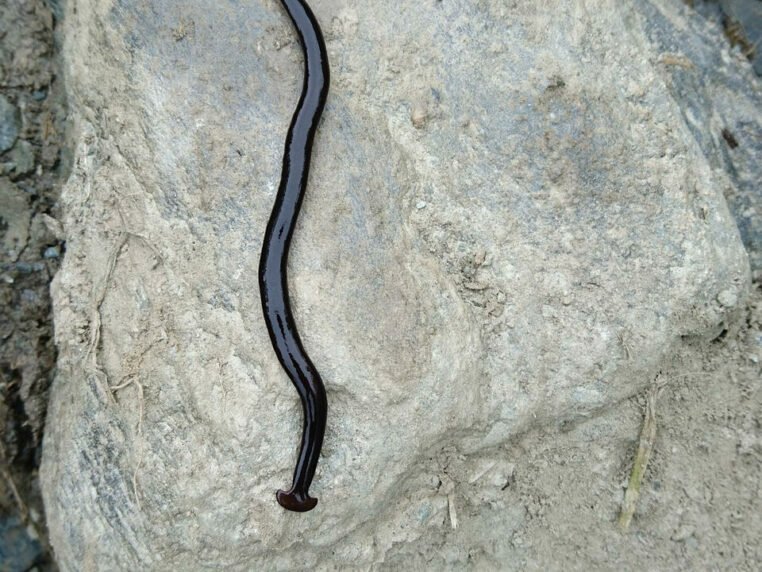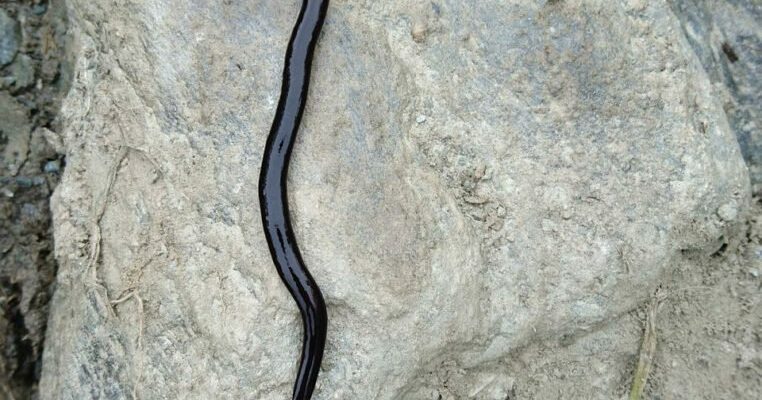
You might be wondering why it’s essential to handle these worms with care. Well, for starters, they’re not just unique in appearance; they also have a few tricks up their sleeves! Removing them improperly can lead to them multiplying or even harming you. So, let me explain how to deal with hammerhead worms in a way that’s both effective and safe for you and your garden.
Understanding Hammerhead Worms
Before we jump into removal techniques, it’s important to understand what hammerhead worms are and why they might be invading your space. Native to tropical regions, these worms can now be found in many areas due to global trade and climate change. They thrive in moist environments, making gardens an ideal home.
One key feature of hammerhead worms is their unique shape. Their flattened bodies allow them to glide through the soil, while their distinctive heads resemble, you guessed it, a hammer! They can reach lengths of up to 12 inches, but even shorter ones can be destructive.
Interestingly, these worms are predators. They typically feed on earthworms, slugs, and other small invertebrates. So, if your garden seems to be losing its beneficial critters, hammerhead worms could be the culprits. Understanding their behavior helps in figuring out the best removal tactics.
Why Safe Removal Techniques Matter
You might be thinking, “Why not just grab a shovel and be done with it?” Here’s the thing: hammerhead worms can regenerate if cut in half, meaning you could end up with more worms instead of fewer! Plus, they produce toxic secretions, which can irritate your skin and even harm pets if ingested. That’s why safe removal techniques are crucial.
Removing these worms safely means you won’t cause further issues for your garden or yourself. A gentle approach helps ensure you’re not inadvertently spreading the problem. Also, let’s face it, no one wants to discover a worm crisis after a heavy-handed removal attempt.
So, what are these techniques? Let’s explore some friendly methods to get rid of hammerhead worms without the drama.
Hand Removal: The Gentle Approach
One of the simplest and most direct methods for removing hammerhead worms is by hand. But don’t go in without a plan! Here’s how you can do it safely:
- Gear Up: Before you dive in, wear gloves! This protects your skin from any toxins the worm might release.
- Catch & Release: Use a small container to scoop them up. Gently place the worm into the container to avoid injury. Make sure you don’t drop it—it’s a one-way ticket to multiplication!
- Relocate: Once you have it safely contained, it’s time for relocation. Take the worm far away from your garden and release it in a suitable environment, like a damp area in the woods. Just make sure it’s not someone else’s garden!
This method can feel a bit like being a worm ambassador. You’re removing them kindly and giving them a chance to thrive elsewhere while keeping your plants safe.
Using Salt or Vinegar Solutions
If hand removal isn’t your style, or you’re dealing with a larger number of hammerhead worms, you can use salt or vinegar. Both are effective and more accessible for many people. Here’s how to do it:
- Salt Treatment: Mix a solution of salt and water (about 3 tablespoons of salt in a quart of water). Pour it directly onto the hammerhead worm. The salt will dehydrate and ultimately kill the worm. Just be cautious to avoid harming nearby plants!
- Vinegar Solution: Similar to salt, vinegar is another effective treatment. Mix equal parts of water and vinegar and spray or pour it onto the worm. It’s less harmful to your garden and will help in neutralizing the worm.
Just remember, while these methods are effective, they should be used in moderation. Too much salt or vinegar in your garden can affect the soil health.
Prevention: Keeping Your Garden Safe
Once you’ve removed the hammerhead worms, you’ll want to take steps to prevent them from coming back. Prevention is always better than cure, right? Here are some strategies you can implement:
- Avoid Overwatering: Hammerhead worms thrive in moist environments. Make sure your garden isn’t overly damp. Watering in the morning helps soils dry out during the day.
- Improve Drainage: Consider enhancing soil drainage with organic matter. This not only helps plants thrive but also makes conditions less favorable for invading worms.
- Regular Checks: Get into the habit of checking your garden regularly for signs of these worms. Early detection makes removal easier and keeps your garden healthy.
Taking these preventive measures can save you time and trouble in the long run. Think of it as adding a “guard” to your garden, keeping it safe from unwelcome guests.
What to Do If You Have Pets
If you have pets that roam your garden, it’s vital to consider their safety while dealing with hammerhead worms. Here’s how you can protect your furry friends:
- Keep Them Away: When you’re working on removing the worms, try to keep your pets indoors. It’s better for everyone, as pets may be curious about the worms and get into trouble.
- Educate Your Family: Teach kids about not touching or playing with these worms. Kids are naturally curious, but it’s essential to let them know that not all creatures are safe to handle.
- Regular Vet Checks: If your pets have a habit of eating garden critters, regular vet check-ups can help catch any issues early.
Your pets’ well-being is just as important as your garden’s health. With a bit of care, you can keep both safe from harm.
Final Thoughts on Hammerhead Worm Removal
Dealing with hammerhead worms might seem daunting, but with the right techniques, you can keep your garden healthy and thriving. From gentle hand removal to salt and vinegar solutions, you have options that don’t harm the environment or your plants. Remember, prevention is key, so improving garden conditions will help keep these critters away.
Honestly, a little knowledge goes a long way in the garden. By understanding and safely removing hammerhead worms, you’re taking an important step towards maintaining a vibrant and healthy space. Happy gardening!

